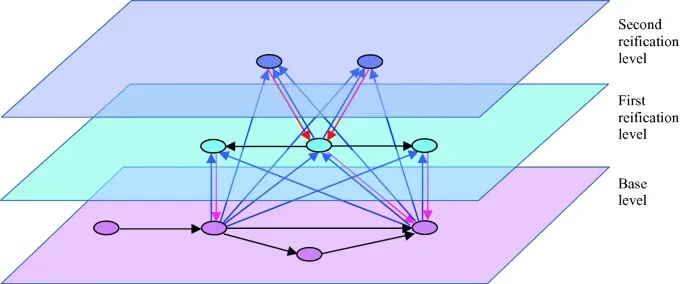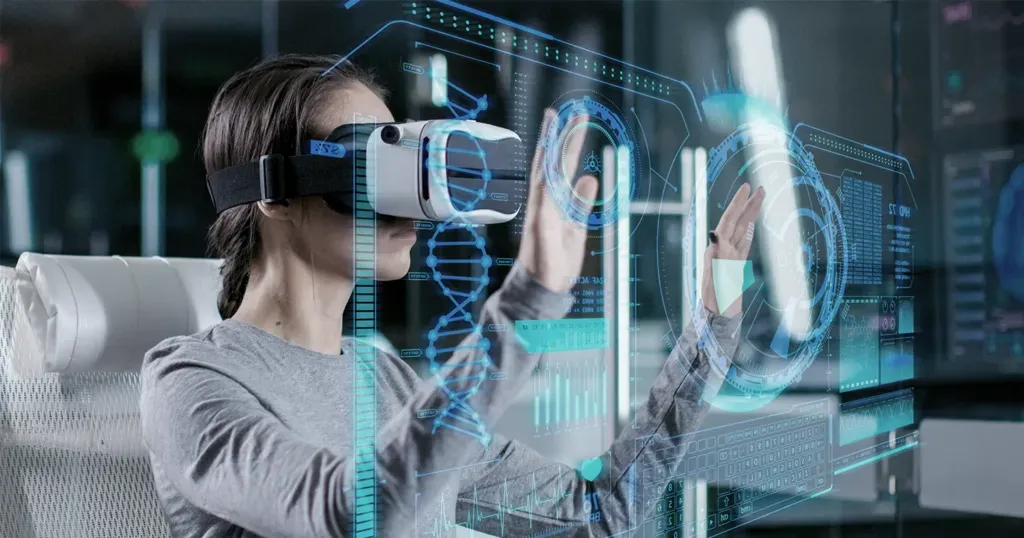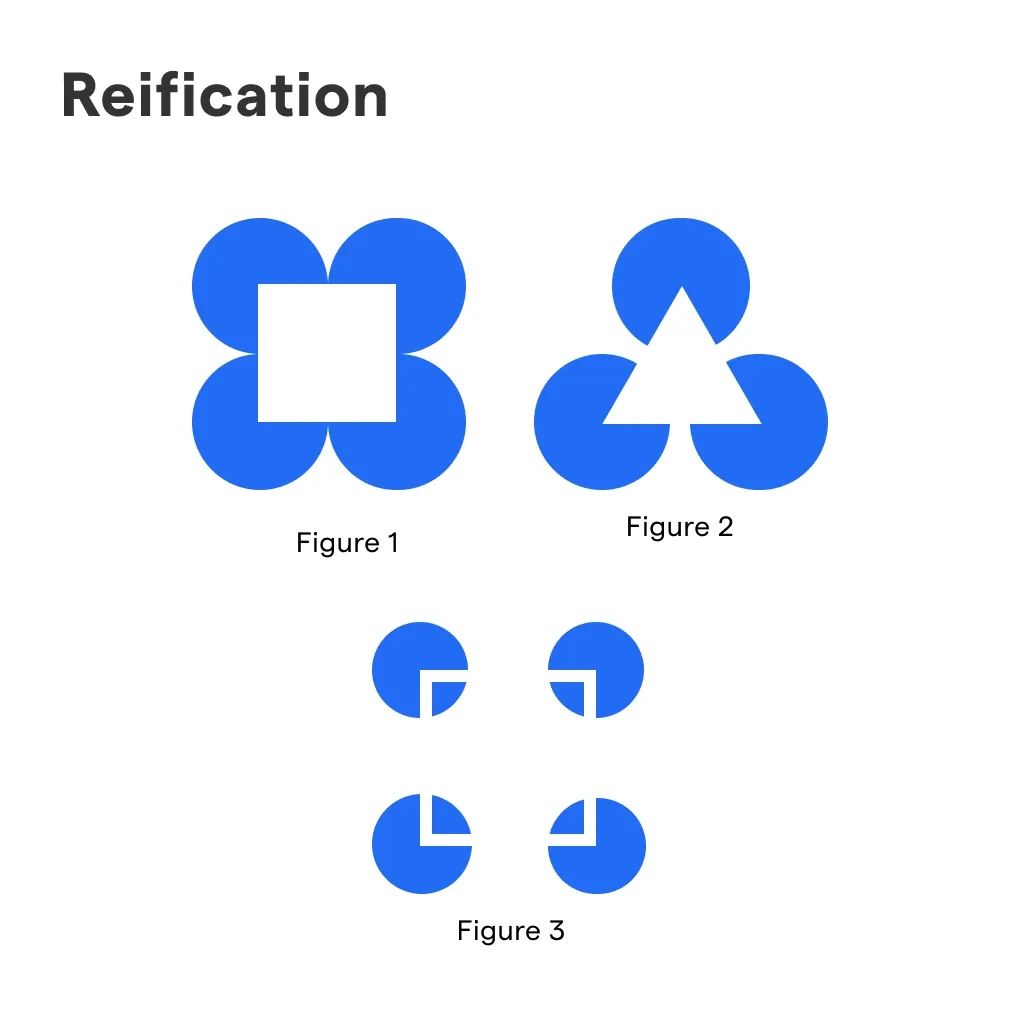What is Reification?
Reification is the process by which abstract concepts, ideas, or complex processes are translated into a concrete, tangible form.
It involves treating something immaterial as if it were a physical object.
Origin of the Term
The term originates from Latin, where "reificare" means "to make into a thing". This philosophical concept has broad applications across various fields.
Relevance
Understanding reification can enhance our grasp of how concepts or practices manifest in tangible forms in our daily life, including language, social interactions, and technology.
Examples in Everyday Life
Examples of reification include turning the concept of time into a clock or the abstract concept of love into a heart symbol.
Why It Matters
Reification allows us to interact more effectively with abstract concepts by grounding them in physical reality, making them easier to understand and manipulate.
Why is Reification Important?
Reification plays a crucial role in multiple disciplines by giving abstract ideas a tangible form.
- Facilitates Communication: Reification helps in simplifying complex ideas, making them more accessible and easier to communicate.
- Enhances Understanding: By translating abstract concepts into concrete forms, reification aids in better comprehension among individuals.
- Fosters Creativity: The process of reification encourages creative thinking, as it involves finding tangible representations for abstract ideas.
- Impact on Technology: In technology, reification allows for the conceptualization and development of abstract algorithms or processes into user-friendly interfaces.
- Applications in Education: Educational strategies often employ reification to teach complex principles through tangible examples or models.
When is Reification Used?
Reification finds its usage in various contexts, making abstract concepts more graspable.
- Philosophical Discussions: Philosophers use reification to debate concepts like existence, reality, and identity by giving these abstract notions some form of concrete expression.
- Software Development: In computer science, reification is used to turn theoretical models or algorithms into actual code or software applications.
- Art and Literature: Artists and writers reify emotions, ideas, or themes, depicting them through physical art forms or stories.
- Social Sciences: Reification is utilized in social sciences to describe how social constructs like "society" or "economy" take on a life of their own, influencing human behavior.
- Education: Teachers employ reification by using physical objects or activities to explain abstract concepts, improving understanding and retention.
Where does Reification Occur?
Reification occurs across different domains, manifesting in unique and interesting ways.

- In Language: Language reifies abstract concepts through words, making the immaterial matters discussable.
- In Technology: Technology, especially in software development and interface design, reifies complex processes into user-friendly applications.
- In Art: Art reifies emotions, ideals, or sociopolitical messages through painting, sculpture, music, and more.
- In Social Structures: Reification occurs in the way people conceptualize and interact with social constructs, like laws or social norms.
- In Education: Educational tools and methodologies reify learning concepts into tangible, understandable formats for students.
How Does Reification Work?
Let's dive into the mechanisms through which reification works and brings abstract concepts to life.
- Conceptualization: The first step involves conceptualizing the abstract idea or process that needs to be reified.
- Representation: The next step is finding a suitable physical form or representation that embodies the abstract concept effectively.
- Implementation: The chosen representation is then implemented, whether as a physical object, a software program, a symbolic figure, etc.
- Interaction: The reified concept is introduced to the audience, allowing them to interact and engage with the abstract idea in a tangible way.
- Evaluation: The effectiveness of reification is often evaluated based on how well the audience understands or engages with the reified concept.
Challenges in Reification
While reification is a powerful tool, it comes with its set of challenges.

- Oversimplification: One of the risks of reification is the oversimplification of complex ideas, potentially leading to misunderstanding or loss of depth.
- Misinterpretation: The physical or concrete representation might be misinterpreted, leading to a skewed understanding of the original abstract concept.
- Ethical Concerns: Especially in social sciences, reifying social constructs can lead to deterministic thinking, overshadowing individual agency.
- Creativity Limitations: Finding innovative and accurate representations for abstract ideas is challenging and limits creativity.
- Cultural Differences: Reified concepts might not translate well across different cultures, leading to miscommunication or cultural insensitivity.
Best Practices with Reification

Certain best practices can be followed to effectively utilize reification.
- Clarity in Conceptualization: Ensure the original abstract concept is clearly understood before attempting reification.
- Audience Engagement: Engage with your audience to find the most effective and understandable forms of representation.
- Flexibility: Be open to revising your reified concept based on feedback or evolving understanding.
- Ethical Considerations: Consider the ethical implications of reifying certain concepts, especially in sensitive social contexts.
- Continuous Learning: Stay informed about new methods and tools for reification, especially with the rapid advancements in technology.
Trends in Reification
The practice of reification evolves with time, influenced by technological advancements and changing societal norms.
Virtual and Augmented Reality

Emerging technologies like VR and AR offer new ways to reify abstract concepts in immersive environments.
Interactive Learning
In education, there's a trend towards using interactive tools and games for the reification of complex learning material.
Digital Art
Digital platforms and tools are enabling artists to explore new forms of reification, blending physical and virtual realities.
Software Abstractions
In software engineering, higher-level abstractions and APIs demonstrate evolving ways to reify complex processes into simpler, more manageable forms.
Sociopolitical Discourse
The reification of societal and political concepts in media and public discourse continues to evolve, reflecting the complexities of modern society.
Frequently Asked Questions (FAQs)
What is the purpose of reification in data modeling?
Reification allows the representation of relationships within data as first-class entities, enabling more complex structuring and querying.
How does reification affect the complexity of a database schema?
It can increase schema complexity by adding layers that turn relationships into entities but also adds the flexibility to describe and query the relationships.
Can Reification be applied in Object-Oriented Programming?
Yes, reification is used in object-oriented programming to make abstract concepts concrete by defining them as objects with properties and methods.
What are the trade-offs of using reification in rdf?
Reification in RDF can enhance expressiveness but may lead to verbosity and higher processing costs for queries.
How does reification impact data analysis?
Reification provides a deeper level of data granularity, which can yield more insights but requires more sophisticated analysis techniques.

